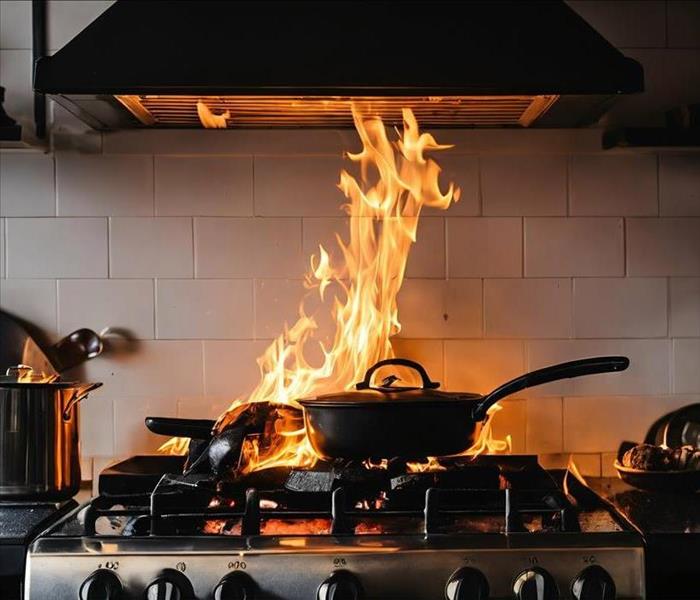Preventing Kitchen Fires | SERVPRO of Morro Bay/King City
2/7/2024 (Permalink)
 Has your home been impacted by a disastrous fire? SERVPRO of Morro Bay/King City wants to help restore it. Call us today!
Has your home been impacted by a disastrous fire? SERVPRO of Morro Bay/King City wants to help restore it. Call us today!
Where do you spend the most time when you are at home? You might assume it is your living area or a bedroom, but the more likely place is the kitchen. Think about everything you do in the kitchen and it makes sense—it really is the heart of the home.
The kitchen is also one the most common places that house fires start. There are so many potential hazards in the kitchen that it makes the place you spend most of your time one of the more dangerous spots you can be.
With some easy preventive steps, you can keep your house safe and continue enjoying the heart of your home. Keep reading to learn more from our SERVPRO® team.
Identify the Risks
The first step to protecting your kitchen and your home is understanding the risks. When you get to know the ways in which fires can start and spread, you can stay alert and stop problems before they ever begin.
Your stove and cooktop are the biggest risks in the kitchen. Any time you cook, there are a number of ways a fire could start.
Hot grease can pop out of a pan, water can boil over and cause an electrical spark or the kids’ favorite casserole can get too hot and flame up inside the stove. Even a loose sleeve or kitchen towel in the wrong place can lead to a fast-spreading fire disaster.
Other cooking appliances pose a risk as well. The microwave is another hazard, as foods inside it can overheat and burn or an electrical spark can cause flames. Any time you are cooking, in any appliance, stay close by.
Even an electric pressure cooker or slow cooker can lead to a fire. The closer you are, the faster you can react to prevent a total disaster.
Simple Prevention
While the risks in the kitchen may be great, so are tools for prevention. Staying close by is the best way to keep everything from going up in flames, quite literally.
When you cook, make sure you have a lid and a fire extinguisher within arms’ reach to put out sparks fast. Grease fires should be smothered, so even if the recipe doesn’t call for it, make sure you get a lid out when you are cooking on the stovetop.
Another simple way to keep things safe in the kitchen is to avoid clutter. It can be easy to toss a hand towel around while you cook, but make sure you keep it far from the oven or any other device that is turned on.
Don’t store items too close to the stove, either, including spoons or other utensils you may be using while you cook. Always turn on your oven light when you have something baking, and if it does catch fire, don’t open the door. Turn the oven off and wait for the flames to go out.
Paying close attention during cooking is crucial for preventing fires, but consider how you close down your kitchen for the day as well. We generally have a lot of electronic appliances in our kitchen that help make getting meals on the table easy.
Unplug as many of these as possible when they are not in use, and keep an eye on their electric cords. Clean grease or other residue off regularly, and don’t use cords that have visible fraying.
If your home is older, consider upgrading your outlets to GFCI outlets. These outlets have a fast-acting circuit breaker to prevent potential electrical surges. They are especially helpful in places like the kitchen where water may accidentally splash.
Make sure you have a smoke detector either in your kitchen or directly outside of it. Many kitchen fires spread because the smoke detector closest to where the fire started was disabled. Even if you frequently burn dinner, keep your smoke detector working and ready to protect your home.
Let the kitchen be the best room in your home by keeping things fire-safe. Stay close and keep safety equipment nearby so you can stop things before they get out of control.
Do you have smoke, soot or other fire damage in your home? Contact us to get things cleaned up fast.





 24/7 Emergency Service
24/7 Emergency Service